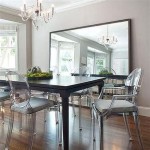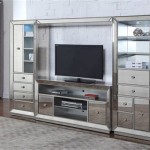Antique Mirror Console Tables: A Reflective Glimpse into History and Design
Antique mirror console tables offer a unique blend of functionality and decorative appeal. They serve as elegant additions to entryways, hallways, and living spaces, providing a surface for displays and adding a touch of vintage charm. Their reflective surfaces enhance the perception of light and space, making them particularly suitable for smaller areas.
The history of console tables can be traced back to 17th-century France. Originally designed as wall-mounted shelves to display decorative objects, they evolved into freestanding pieces supported by ornate legs or consoles. The incorporation of mirrored surfaces added a new dimension to their design, amplifying their elegance and reflecting the surrounding décor.
Various styles of antique mirror console tables reflect different historical periods and design movements. Baroque and Rococo styles, popular during the 17th and 18th centuries, are characterized by elaborate carvings, gilded details, and curved lines. Neoclassical designs, emerging in the late 18th century, embrace a more restrained aesthetic inspired by classical Greek and Roman art, featuring straight lines, symmetrical forms, and simpler ornamentation.
Art Deco console tables, popular in the 1920s and 1930s, showcase geometric patterns, stepped designs, and the use of materials like chrome and mirrored glass. These pieces often feature sleek, streamlined silhouettes and reflect the era's fascination with modernism and industrial design. Victorian-era tables often exhibit intricate carvings, dark wood finishes, and ornate detailing, reflecting the opulence and craftsmanship of the period.
The construction of antique mirror console tables often involves a combination of wood, metal, and glass. Common wood types include mahogany, walnut, and oak, chosen for their durability and aesthetic qualities. Metal elements, such as brass or bronze, are frequently used for decorative accents, hardware, and structural support. The mirrored surfaces are typically created using traditional techniques, including silvering or mercury backing, which contribute to their antique appearance.
Identifying authentic antique mirror console tables requires careful examination of several factors. Construction techniques, materials used, and the overall style can offer clues to the table's age and origin. Examining the joinery, hardware, and finish can help differentiate handcrafted antique pieces from later reproductions. Signs of wear and aging, such as patina on metal surfaces or slight imperfections in the mirror, can also indicate authenticity.
When incorporating an antique mirror console table into a modern interior, consider the existing décor and the desired aesthetic. These versatile pieces can complement a range of styles, from traditional to contemporary. In a classic setting, an ornate Baroque or Rococo table can enhance the room's elegance. In a more modern space, a streamlined Art Deco console table can add a touch of vintage glamour.
Maintaining and preserving an antique mirror console table requires careful handling and regular cleaning. Dusting with a soft cloth and using appropriate cleaning solutions for the specific materials can help maintain the table's appearance. Avoid placing the table in direct sunlight or areas with high humidity, as these conditions can damage the wood and mirror. Consulting with a professional restorer is recommended for significant repairs or restoration work.
The value of antique mirror console tables varies depending on factors such as age, style, condition, and provenance. Rare or historically significant pieces can command higher prices in the antiques market. Consulting with reputable antique dealers or appraisers can provide accurate valuations and insights into the table's history and significance.
Selecting the right antique mirror console table involves considering its size, style, and functionality. Measure the available space to ensure the table fits comfortably without overwhelming the room. Consider the desired aesthetic and choose a style that complements the existing décor. Think about how the table will be used, whether for display, storage, or both, and select a piece with appropriate features such as drawers or shelves.
Antique mirror console tables offer more than just a functional surface; they provide a glimpse into history, artistry, and craftsmanship. Their reflective surfaces enhance the beauty of any space while their unique designs add a touch of timeless elegance. Careful consideration of style, condition, and placement ensures these exquisite pieces become cherished additions to any home.
The market for antique mirror console tables continues to thrive, offering collectors and enthusiasts opportunities to acquire unique and historically significant pieces. Online marketplaces, antique shops, and auction houses provide avenues for exploring a wide range of styles and periods. Thorough research and careful examination are essential when purchasing antique furniture to ensure authenticity and value.

Antique Console Table With Mirror In Optional Furniture From China Home Factory Made Com

The Chantilly Mirrored Console Table With Mirror 1 399 00 Tables Cau Luxury Furniture And Mirrors Rococo Reion Antique Baroque French Style Specialist

Antiqued Mirrored Console Table Patricia Group

Furniture Melange Antique Mirror Console Table

Elegant Italian Baroque Antique Gold Console And Mirror Juliettes Interiors

Venetian Image Antique Mirror Console Table Size Dimension 48

Antique Mirror Console Table With Drawer Mirrormobilia

Console Table Antique Wooden Living Room Furniture Painting

Casa Padrino Luxury Baroque Mirror Console White Antique Gold 125 X 41 H 232 Cm Magnificent Table With Wall Furniture

Pair French Louis Xv Ref No 02152a Regent Antiques








